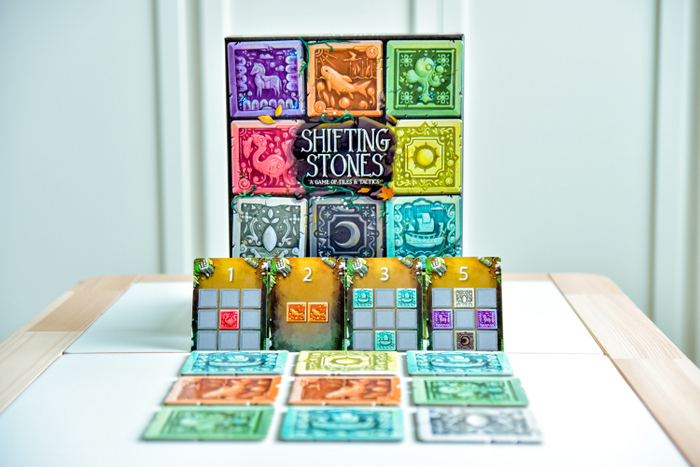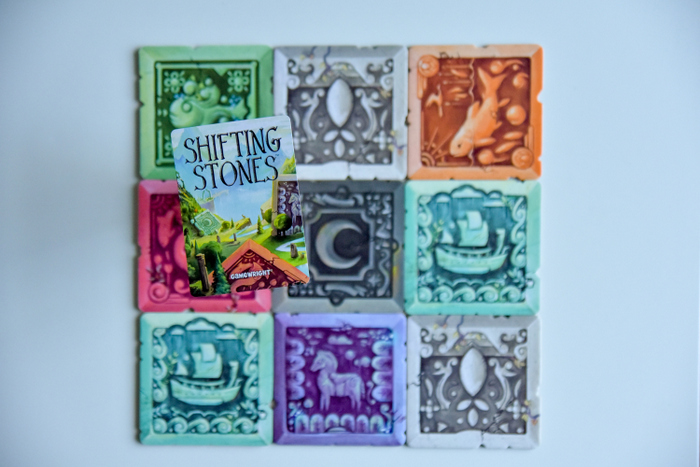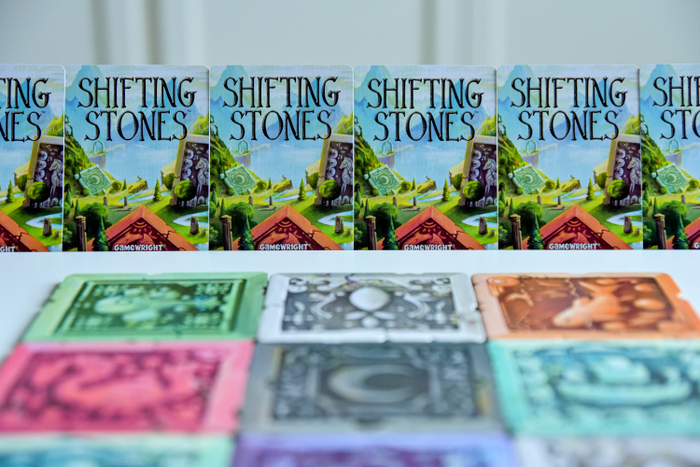
Board game art has come a long long way from the games of my childhood, and Shifting Stones, a new game from Gamewright Games, incorporates lots of really fun art elements that I find so appealing! I see whispers of Scandinavian and other folk art in these beautifully designed tiles, which just adds another layer of educational potential to using this game for gameschooling!
Shifting Stones is a game of swapping and flipping to rearrange the 3×3 grid into a layout that earns you points, but all players are rearranging the grid each turn to provide an intense puzzle challenge!
Each of the 9 stone tiles are double sided with the sun/moon tile, the fish/bid tiles, the horse/boat tiles, and the seed/tree tiles.
TO begin the game, shuffle the tiles and place them randomly on the table in a 3×3 grid, making sure they’re all oriented in the same direction.
*EXPERT TIP* Because the orientation of the tiles matters, we find that it’s easiest for players to orient their pattern cards to match how they are viewing the board. For example, if the board is upside down to you, orient your pattern cards upside down as well, or sideways if you’re siding on either side of the board.
Each player gets 4 pattern cards, which are kept secret from other players.
There are several turn actions to choose from for the active player.
- Shift: Discard one card from your hand to swap the position of any two adjacent tiles.
- Flip: Discard a card and flip one stone to the opposite side.
- Score: Show a pattern card from your hand that matches the current arrangement of the stone tiles and place the pattern card face up in front of you.
- Draw & Pass: Draw cards back up to the 4 card hand limit and pass play to the next player.
- Skip: Draw 2 cards from the deck for a total of 6 to use on your next turn rather than taking other actions on this turn.

The game ends as soon as one player scores the end-game number of pattern cards (depends on the number of players). Points are tallied and the player with the highest score wins!
This game provides a fun environment in which to try out a variety of strategies, something I try to encourage in our family’s gameschooling! Trying something new may end in failure, but you’ll never know until you try! Failure teaches some of the best lessons and is necessary on the road to success!
This game has a variety of themes that could be used to create or supplement a unit study like ancient civilizations, art history, ciphering, ancient languages. The puzzle/strategy/logic elements help to develop math skills as well.









